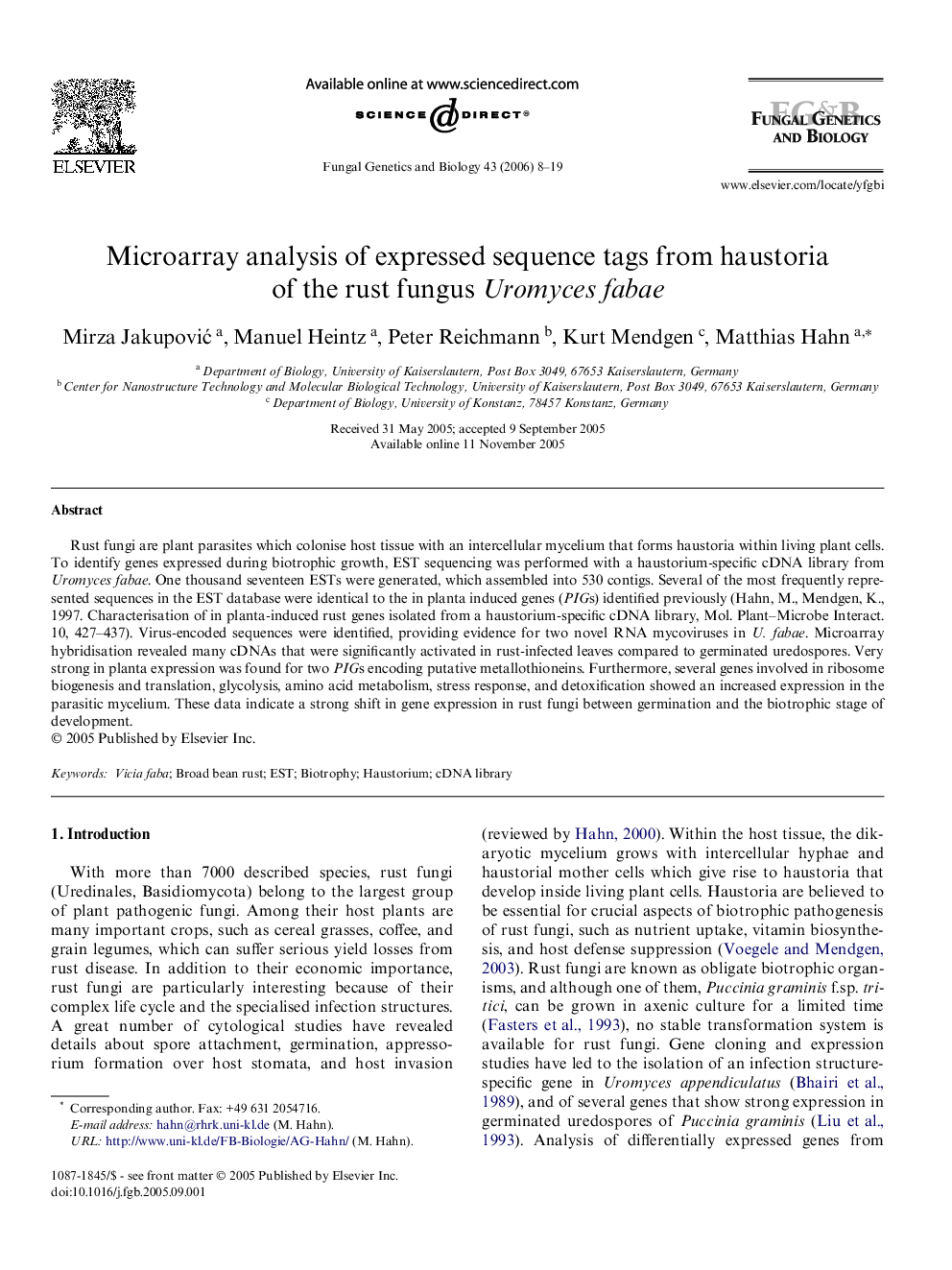| Article ID | Journal | Published Year | Pages | File Type |
|---|---|---|---|---|
| 2181789 | Fungal Genetics and Biology | 2006 | 12 Pages |
Rust fungi are plant parasites which colonise host tissue with an intercellular mycelium that forms haustoria within living plant cells. To identify genes expressed during biotrophic growth, EST sequencing was performed with a haustorium-specific cDNA library from Uromyces fabae. One thousand seventeen ESTs were generated, which assembled into 530 contigs. Several of the most frequently represented sequences in the EST database were identical to the in planta induced genes (PIGs) identified previously (Hahn, M., Mendgen, K., 1997. Characterisation of in planta-induced rust genes isolated from a haustorium-specific cDNA library, Mol. Plant–Microbe Interact. 10, 427–437). Virus-encoded sequences were identified, providing evidence for two novel RNA mycoviruses in U. fabae. Microarray hybridisation revealed many cDNAs that were significantly activated in rust-infected leaves compared to germinated uredospores. Very strong in planta expression was found for two PIGs encoding putative metallothioneins. Furthermore, several genes involved in ribosome biogenesis and translation, glycolysis, amino acid metabolism, stress response, and detoxification showed an increased expression in the parasitic mycelium. These data indicate a strong shift in gene expression in rust fungi between germination and the biotrophic stage of development.
